
How Andy Doubrava Made Rustic Canyon’s Menu His Own, In Six Dishes
When Andy Doubrava took over as executive chef of Rustic Canyon in 2019, it was an easy transition. He and Jeremy Fox, the restaurant’s chef-partner, share a similar ethos: the ever-changing menu is inspired by what’s available at the nearby Santa Monica Farmers Market, and from a handful of small fish and meat purveyors known for using humane and sustainable practices. It helps that he’s been in Fox’s kitchen since 2015, when he started as a line cook.
Doubrava worked at a number of high-profile restaurants in New York before landing in Santa Monica, including Brooklyn’s Reynard, The Spotted Pig, and Salt & Fat in Queens. While working at the latter, the restaurant was awarded a Bib Gourmand nod from Michelin; at Rustic Canyon, he’s twice earned one star.
When Fox stepped away from the day-to-day to open Birdie G’s, it was a no-brainer to have Doubrava take over. Even before taking the reins, the chef had an affinity for creating stripped-back menus that allow ingredients to lead the way, whether a simple gem lettuce salad or chicken so thoughtfully produced it could be plucked right out of a “Portlandia” episode.
“I’m more interested in layers of flavor, instead of just a one-note song,” Doubrava says, apropos of his background in music. A classically trained drummer who studied at the prestigious Berklee School of Music, he likens cooking to jazz. “There’s a lot of making it up as you go along and following what feels right or spontaneous. Other times it’s very structured, with one ingredient relying on another. And then sometimes it’s really cyclical, a kind of big symphony with a lot of moving parts. It’s my job to make sure it all sounds good together.”
Respect for ingredients, both plant and protein, starts with the chef’s deep appreciation of farming. A few years ago he and his fiancée, the chef Tiffani Ortiz, homesteaded around the country on a variety of farms. As comfortable talking about soil pH levels and heritage seeds as he is discussing how to enhance a beurre blanc with homemade butter made from ricotta whey, like music, his food is a concert between himself, the farmers, and his trusted staff.
This past April he brought on pastry chef Erika Chan, who made the move from Chicago to Los Angeles, only to have Michelin recognize her as one of two outstanding California pastry chefs. “It feels like the team is complete now,” Doubrava says. “Sweets aren’t my forte and it’s a pleasure to have someone on the team who has a similar mindset and palate.”
Doubrava relies on all these disparate elements to make his dishes sing. And although on any given week dishes may appear and disappear, these six are a pretty good barometer of how his culinary band cooks up their tunes. Here, the chef describes how his influence and collaborations continue building the Rustic Canyon legacy.
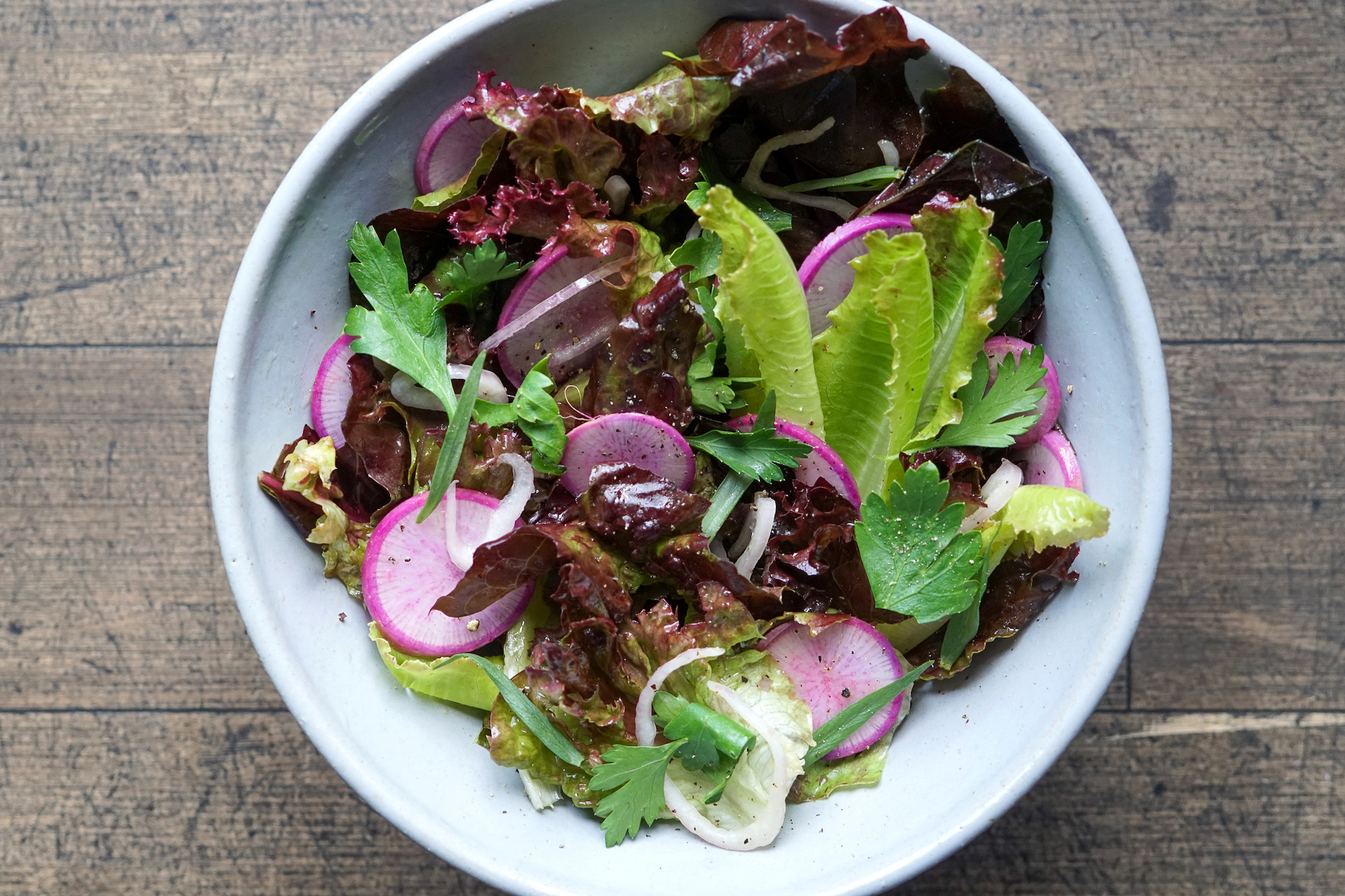
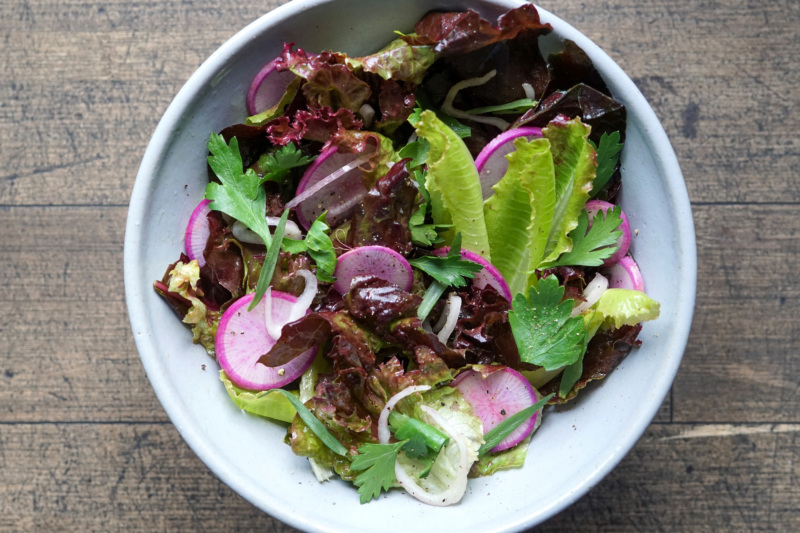
1. Gem lettuces, herbs & shallot vinaigrette
“Jeremy [Fox] and I share a similar philosophy that a nicely seasoned salad is essential. There’s nothing like fresh-picked lettuce from Coleman Family Farms. If you compare it to bland supermarket lettuce, it’s night and day. We dress it simply with a classic vinaigrette — sherry vinegar, olive oil, shallots, and Dijon mustard. Add some radishes, a mix of herbs, and a big grind of black pepper, and that’s it. That’s all you need.”
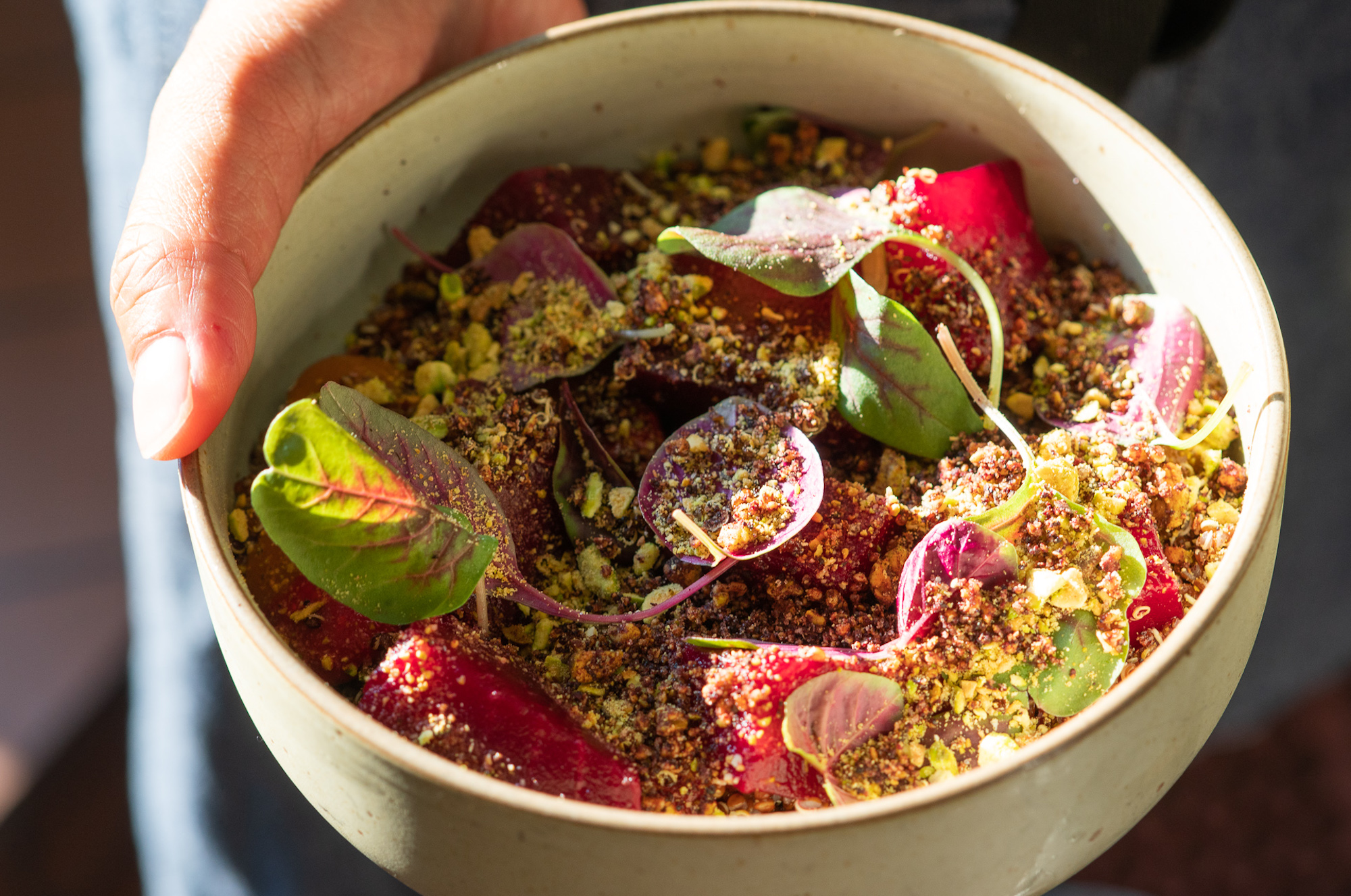
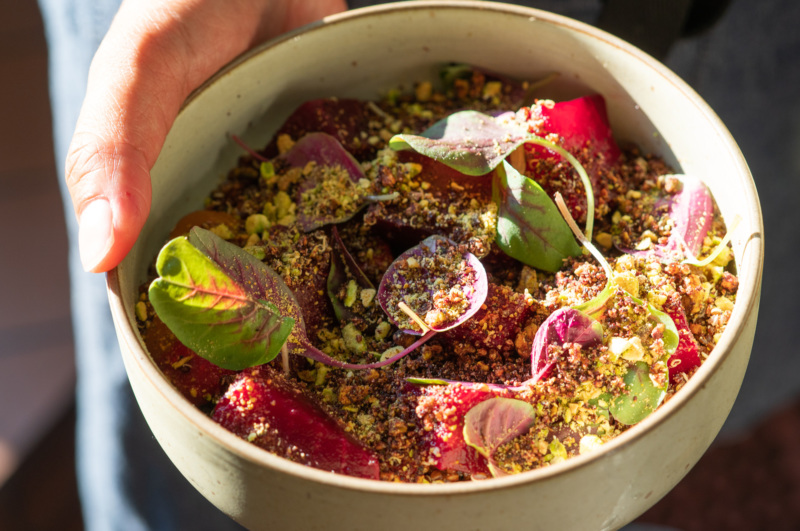
2. Beets & Berries
“Since our menu changes so much, this is one of those dishes you can always count on. Jeremy [who originated the dish] describes it as very Southern Californian, because it’s essentially a grain bowl with a nice mix of textures and flavors.
There’s mashed avocado on the bottom of the bowl seasoned with salt and garlic. Then there’s red quinoa seasoned with olive oil, lemon, mint, and a little salt. The beets are oven-roasted and marinated in pickling liquid, and then, of course, fresh blackberries and raspberries.
The dish is topped with pistachios and what we call ‘beet soil,’ which is made from a puree of the beet tops, piquillo peppers, olive oil, and red wine vinegar. We make sure it stays savory, so we don’t veer off into the sweet side. Then we dehydrate it and wet it with a little bit of olive oil, which makes it look like healthy soil. It’s just another way to use the byproduct of the beet and not waste anything.”
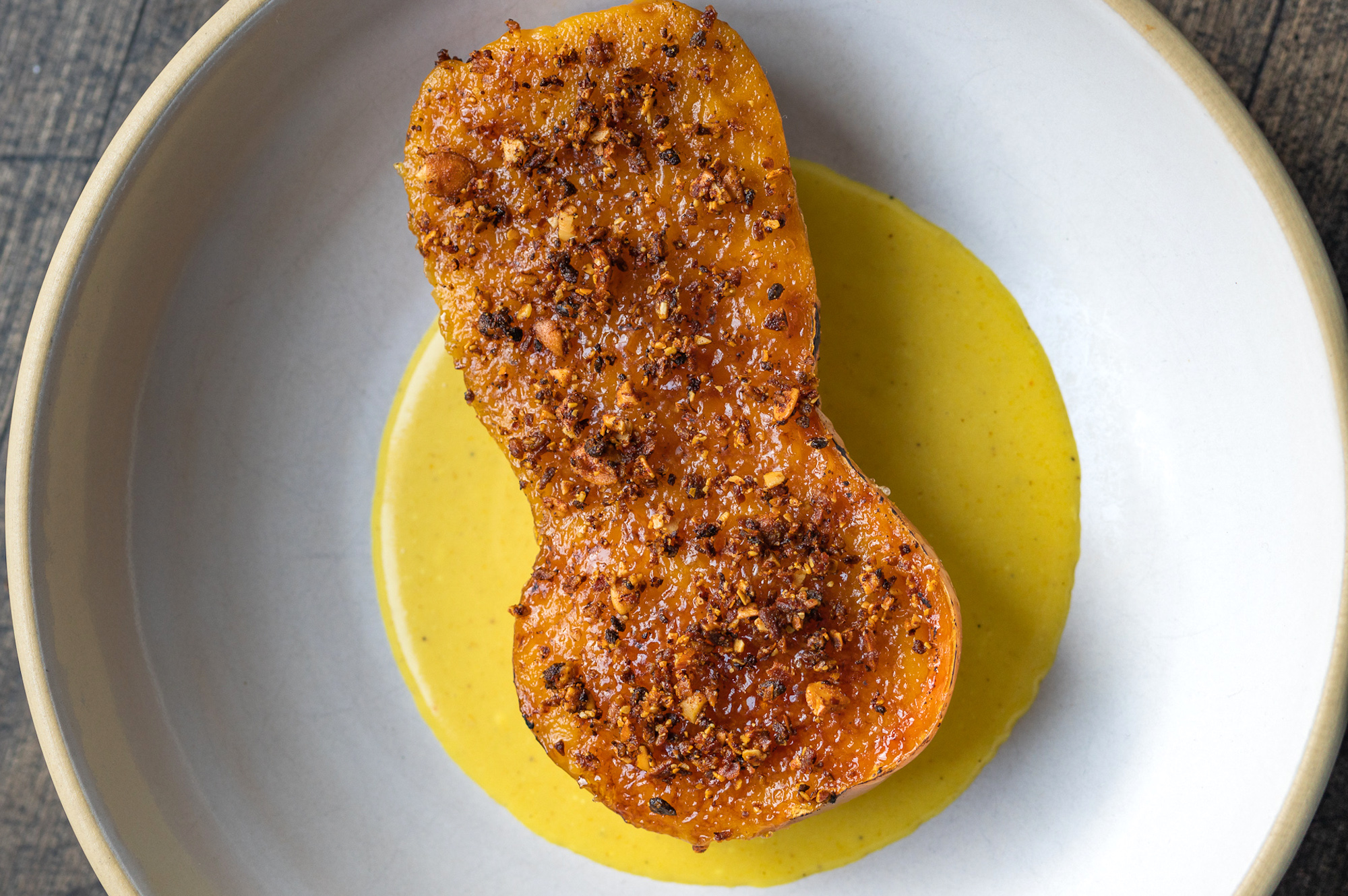
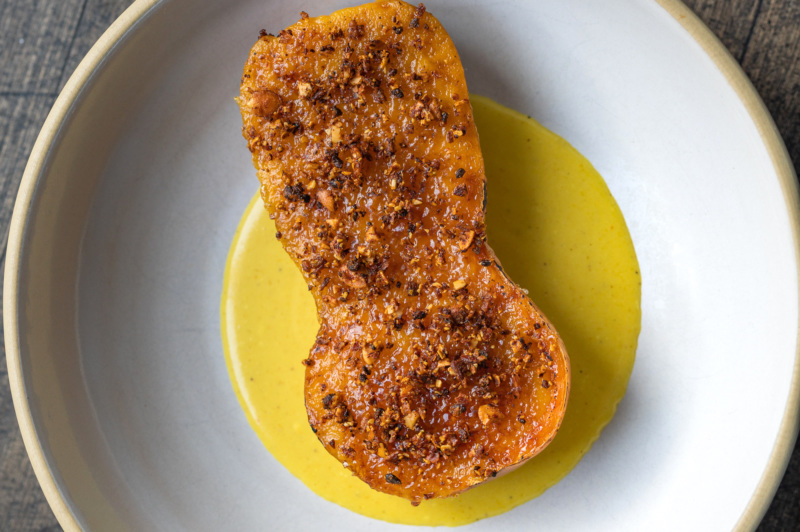
3. Twice-Cooked Honeynut Squash
“This dish is special to me. It’s one of the first dishes I put on the menu, and I spent way too much time formulating this recipe which has a lot of steps, kind of like a symphony of flavor.
We use honeynut squash grown by Wiser Farms, which is basically a little baby butternut squash that can fit in your hand. We cut it in half, take the seeds out, and ferment them with salt in a jar. From there, the halved squashes are brined for six hours, which allows the salt to work its way into every bit of the flesh. Then we dry them overnight and the next day, and roast until tender.
We scoop out the flesh, leaving the shell intact, puree the scooped-out part with housemade miso and put it back into the squash shells. We do this all at a particular temperature, so the starches adhere to the sides of the shell, and it appears as if the squash never had any seeds. We sprinkle a little sugar on top and then torch it so it bruleés.
We take the fermented seeds, cook them in oil low and slow so they caramelize and crisp up. They almost taste like salt and vinegar pumpkin seeds. Then we grind the seeds up and make a sauce with milk, onions, and a vadouvan curry, which turns into pastel yellow, creamy curry sauce.”
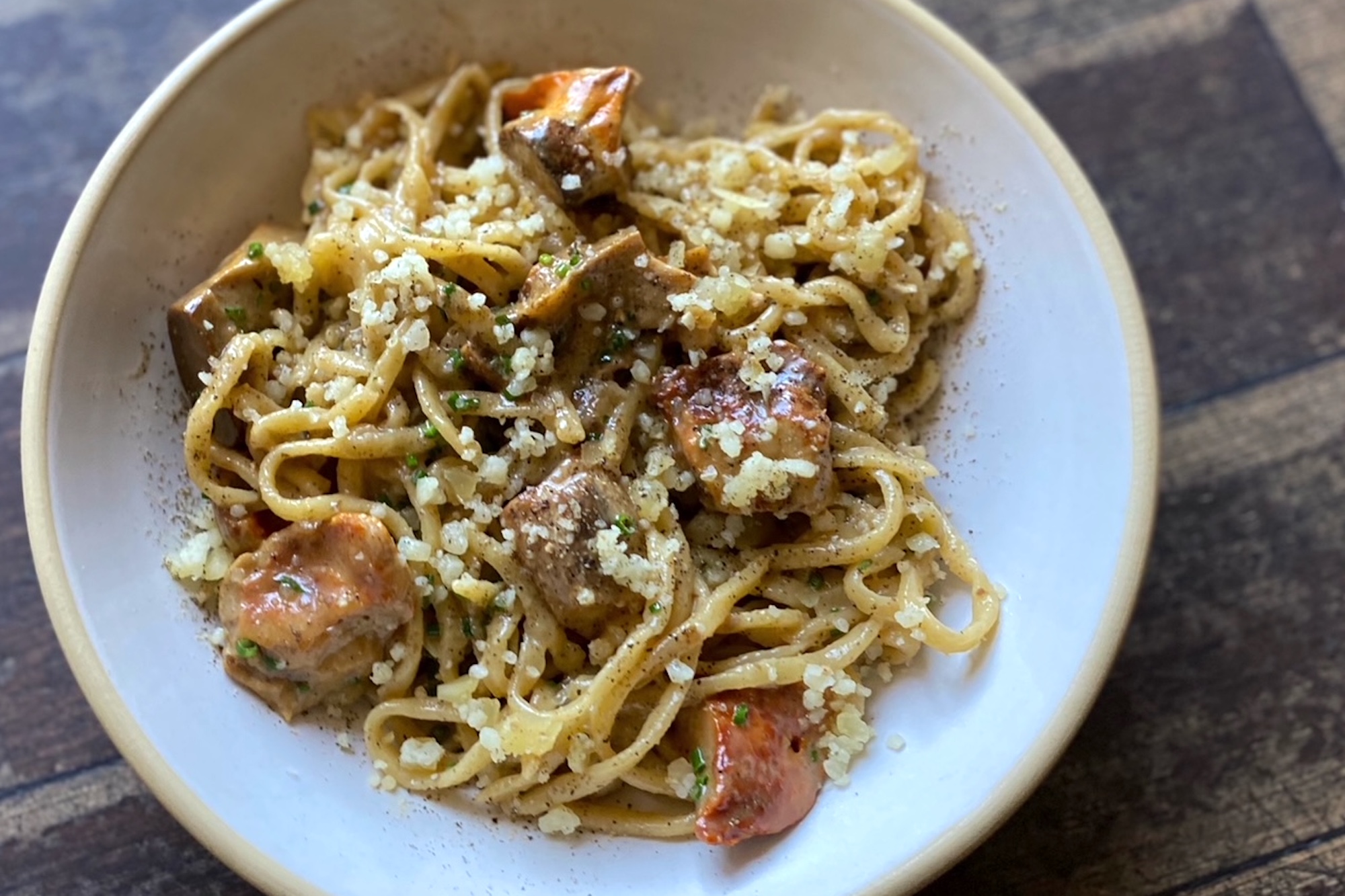
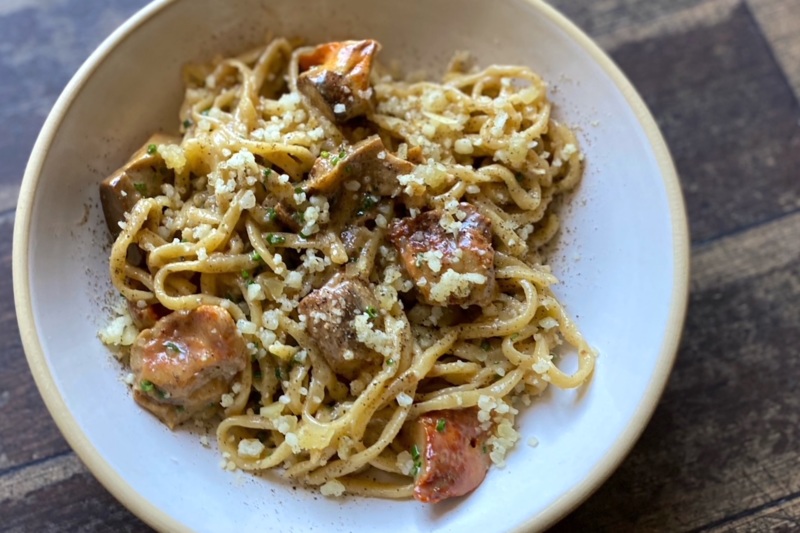
4. Sourdough Linguine
“I ate at Rolf & Daughters in Nashville and had their sourdough cavatelli cacio e pepe. The acid coming from the pasta, it had such a good chew to it, such an interesting texture that I wanted to do something like that.
I worked with my former sous chef Nguyen Bui on the noodles for quite a while. We make pasta every day using our own sourdough discard, and the noodles are like a cross between linguine and an udon noodle. The sauce is brown butter and lemon juice, and we use a little bit of whey leftover from our homemade ricotta and wild mushrooms. It’s like a creamy butter sauce with a nice lemony kick that goes with the mushrooms, which are different every time. We use whatever we can get our hands on. Right now, it’s lobster and chanterelles.”


5. Autonomy Farms Chicken
“We’ve been working with Meredith Bell at Autonomy Farms, who raises chickens on a pasture in Bakersfield, ever since she showed up at the Santa Monica Farmers market.
We butcher the chickens in half, leaving most of the bones in for a better cut and flavor. We brine them, dry them in the fridge skin side up, which helps keep the skin crispy, and cook it in a sauté pan with chicken fat, which makes it juicy too. We also add habanada peppers from Weiser farms to the pan, which are capsaicin free, so they have all the citrus flavor but none of the spice.
For the sauce we go full circle: We use beet juice leftover from the beets and berry dish and make a beet amazake, which is basically beet juice and rice koji. We cook it overnight at a very low temperature, so it ferments into an interesting, sweet liquid that’s like a mole sauce. The beets take on a chocolaty flavor and the light fermentation gives it a balanced funk.”

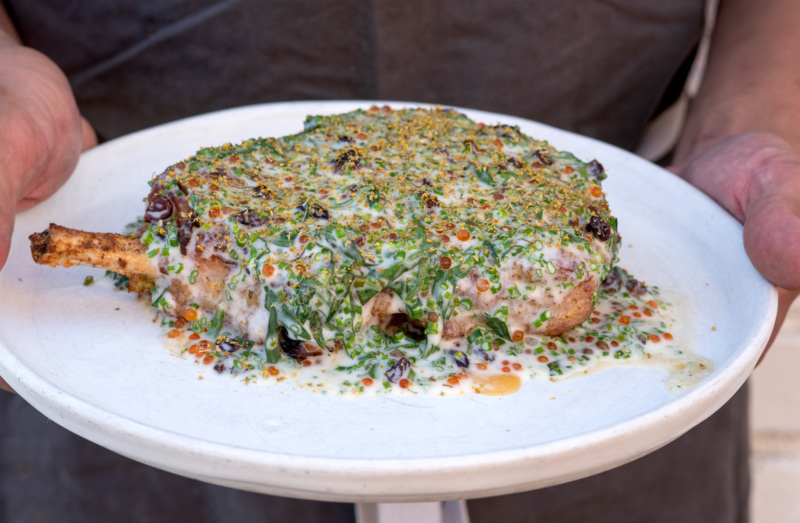
6. Peads & Barnetts Pork Chop
“We start with a big 16-ounce bone-in Peads & Barnetts pork chop. If you look at commercialized American pork, it’s not natural looking, it has everything trimmed off it. But the color of the Peads & Barnetts’ flesh is more red than white, which is a marker of quality. That whole ‘other white meat’ thing is a scam. It’s just a pleasure to cook with this pork and I see (pig farmer) Oliver (Wooley) a few times a week so now I have a personal connection.
We lightly cure it with salt, brown sugar, and fennel seed, rinse it, dredge it in rice flour and then cook it in a pan with pork fat. In the sauce we use our ricotta whey butter, some white wine vinegar, dried currants, some coriander seeds, some herbs and then we add smoked trout roe from Tsar Nicoulai Caviar from the Central Coast. It’s a fun surf-and-turf element and it allows me to play with the smoky flavors.”
Stacie Stukin is a culture essayist and journalist who writes about food, design and art for publications like Architectural Digest, Los Angeles Magazine, Vegetarian Times and the Los Angeles Times. Follow her on Twitter and Instagram. Follow Resy, too.
















